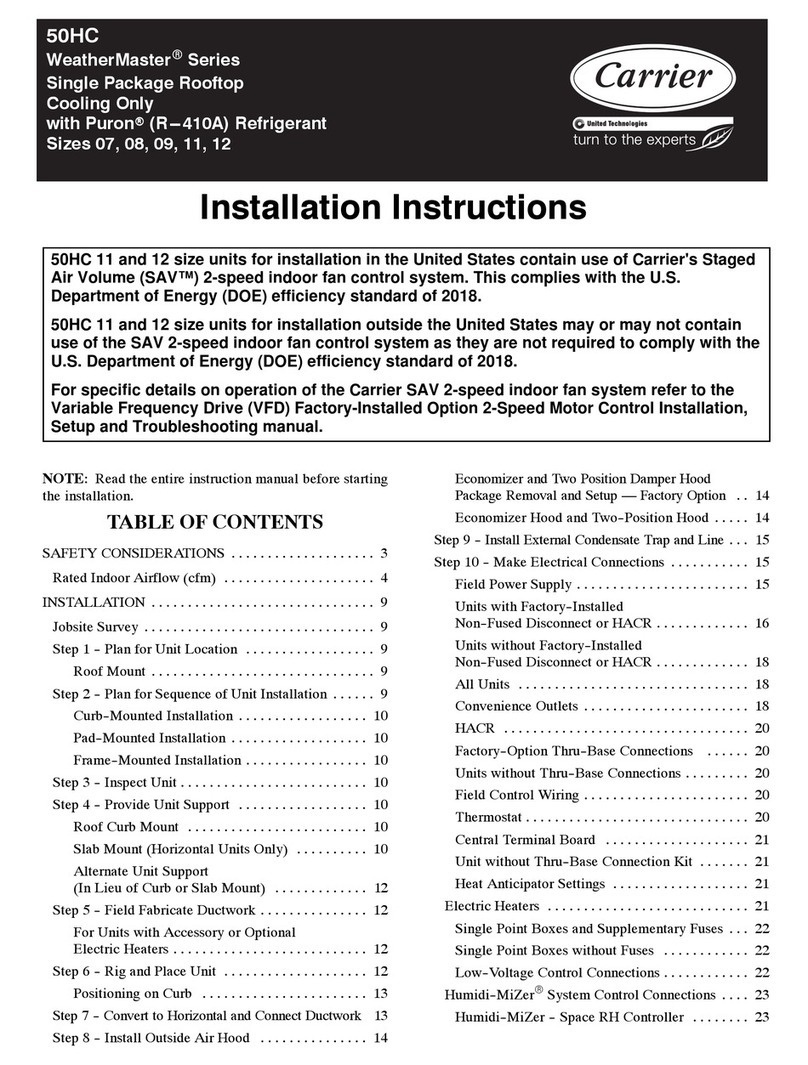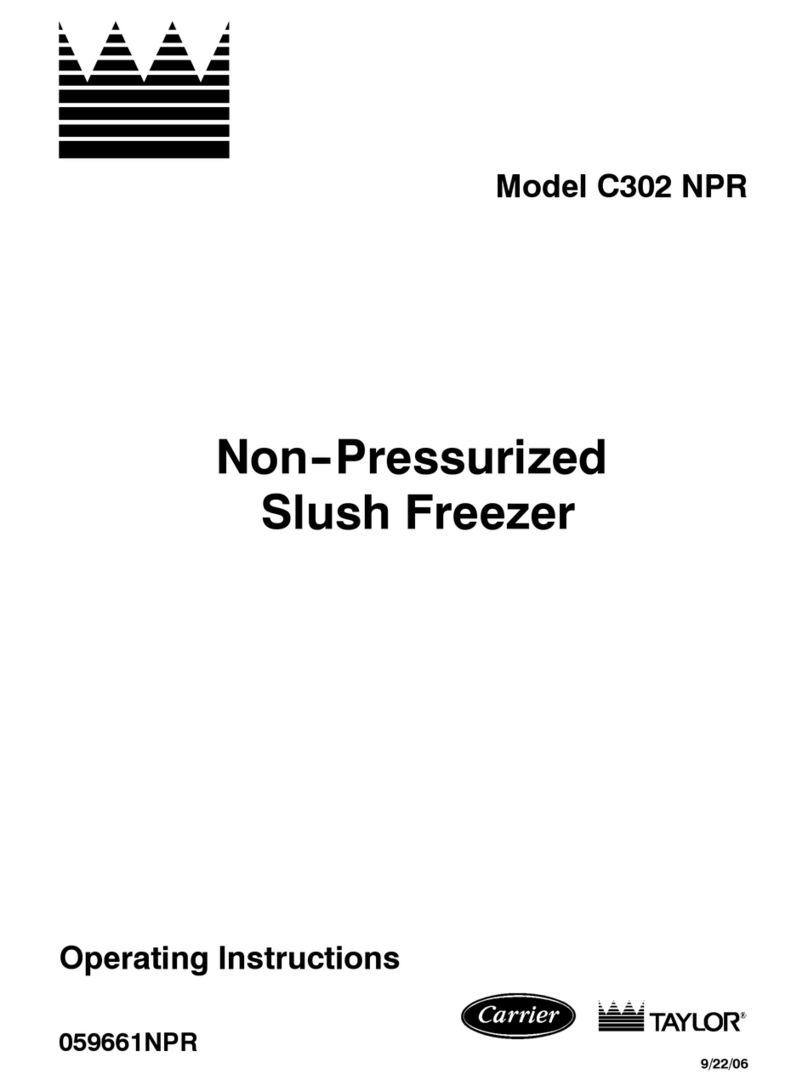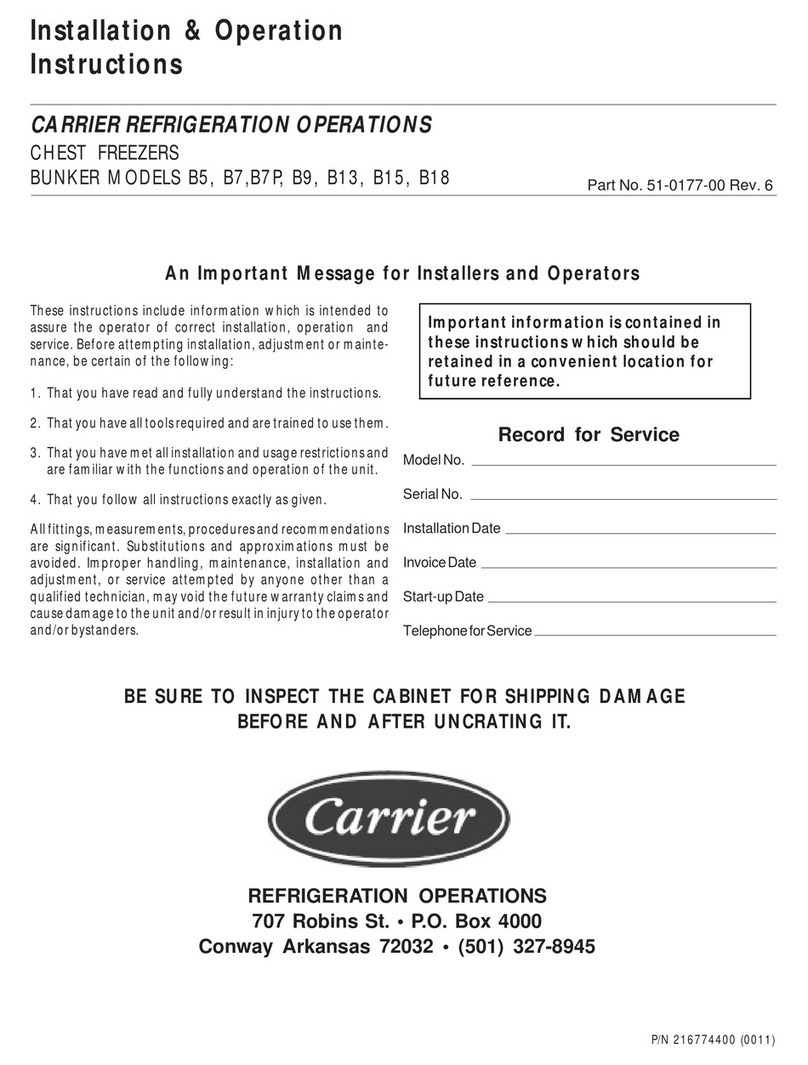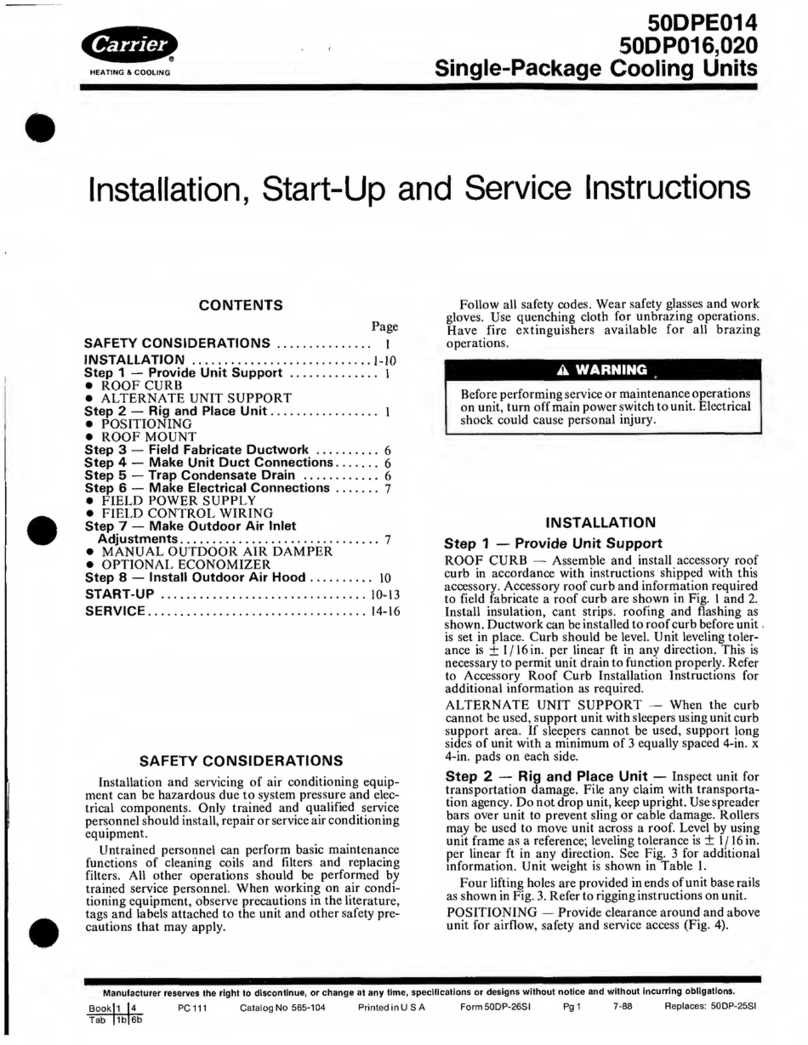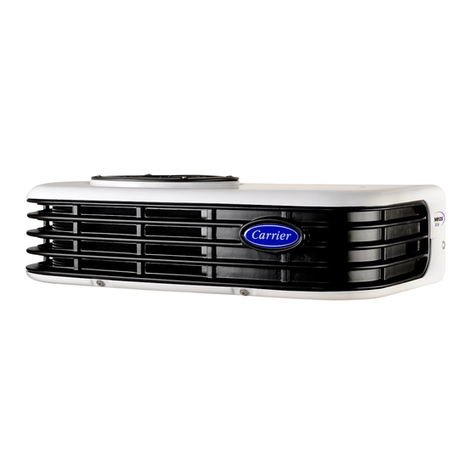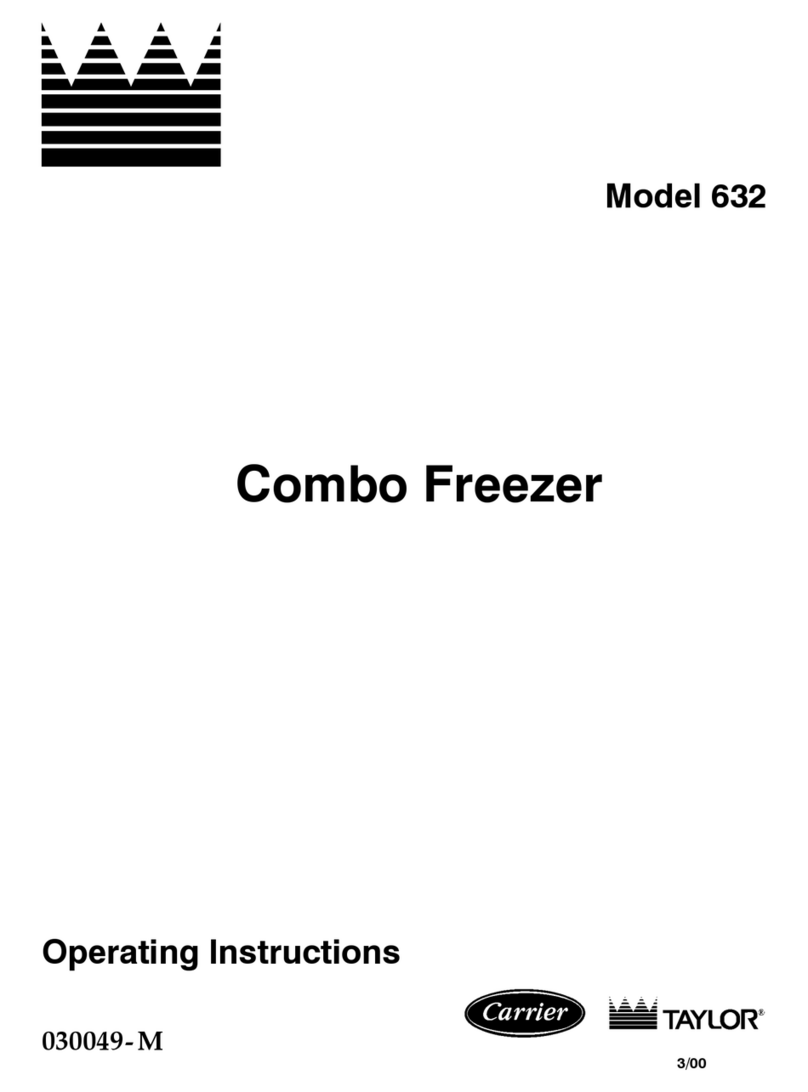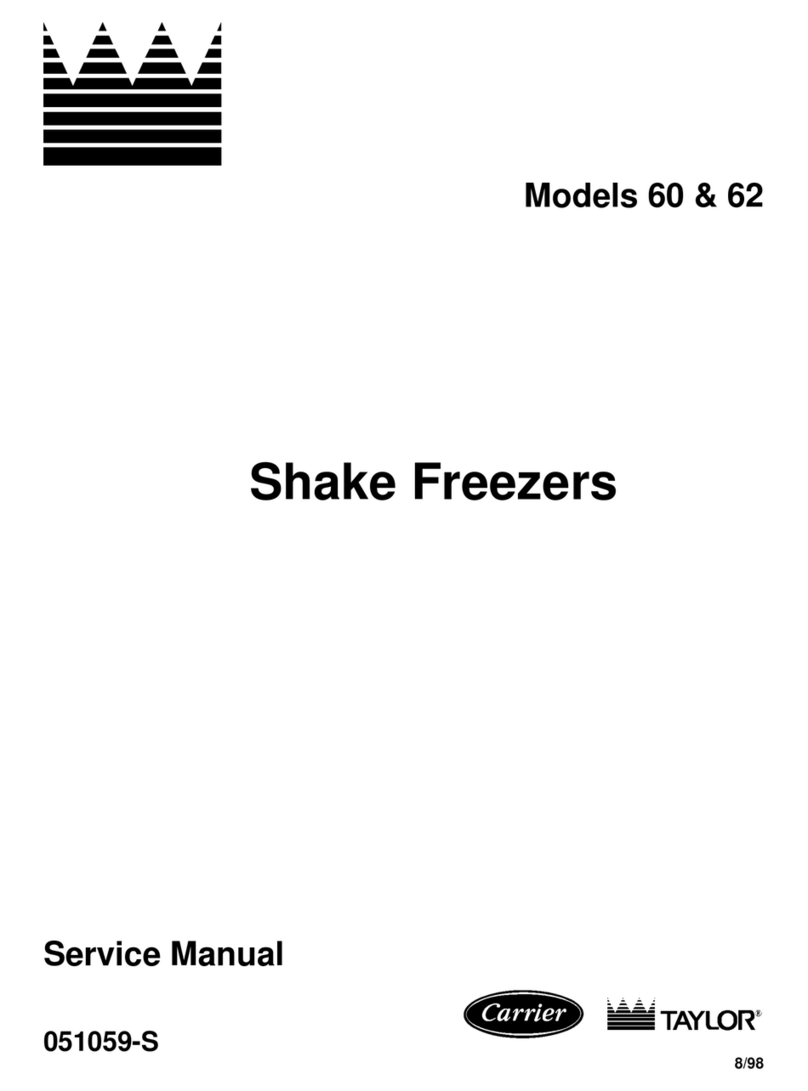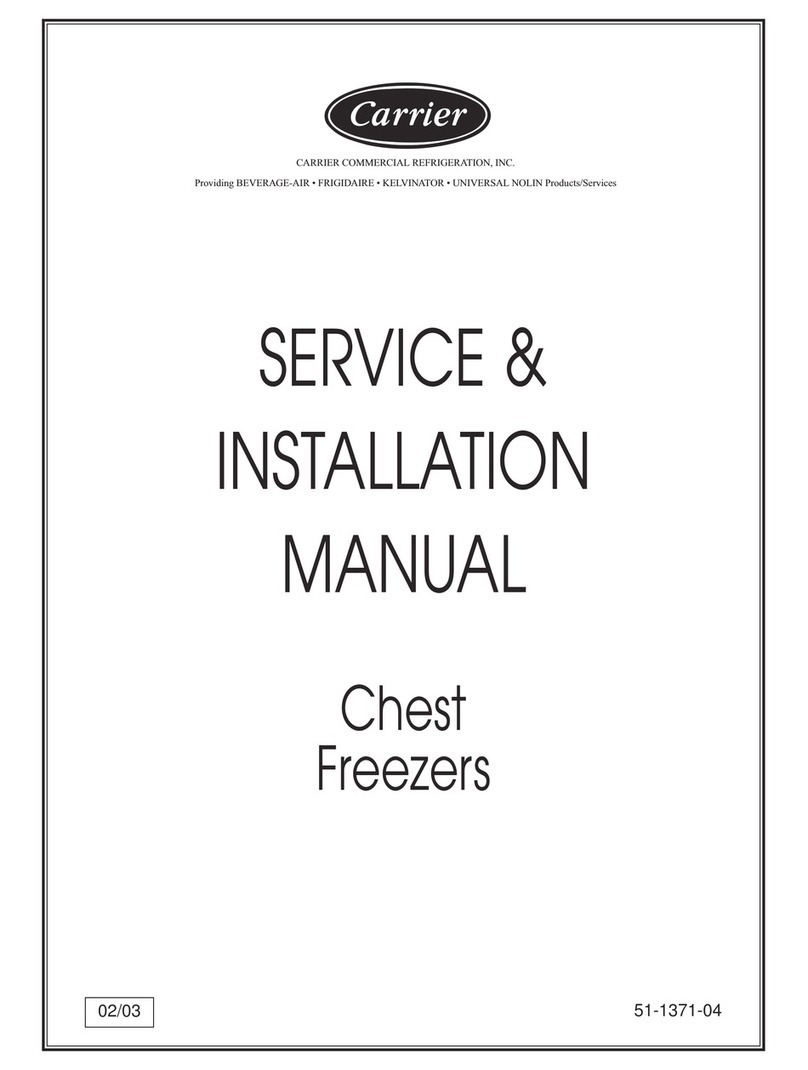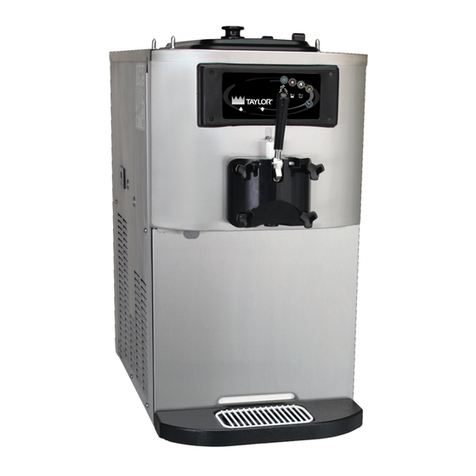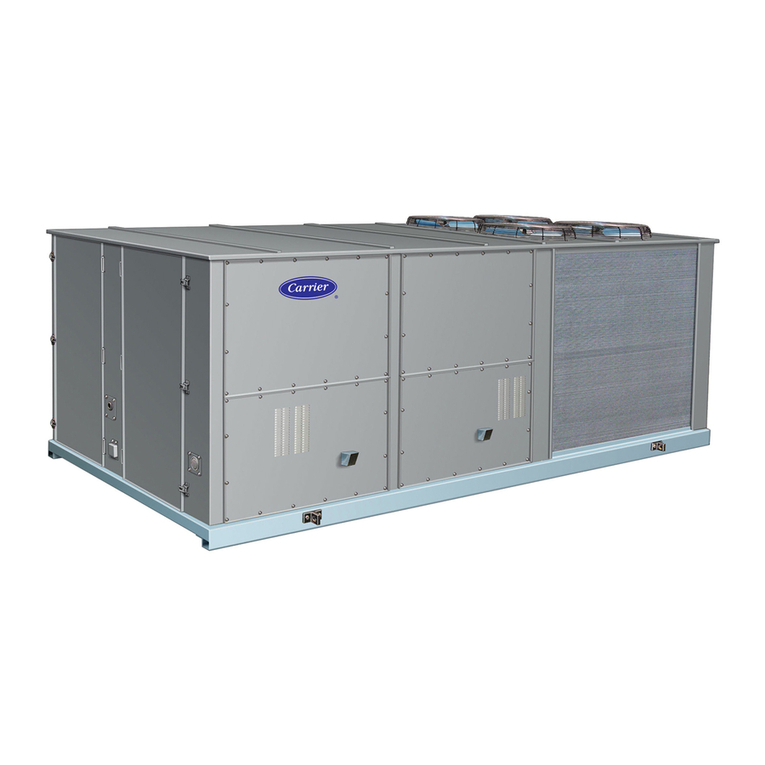
vii T-340
LIST OF ILLUSTRATIONS (Continued)
FIGURE NUMBER Page
Figure 4−3 Diagram of Emergency Bypass Connections 4−8...........................................
Figure 6−1 Manifold Gauge Set 6−1................................................................
Figure 6−2 R-134a Manifold Gauge/Hose Set 6−1....................................................
Figure 6−3 Service Valve 6−2......................................................................
Figure 6−4 Refrigeration System Service Connections 6−3.............................................
Figure 6−5 Compressor Kit 6−5....................................................................
Figure 6−6 High Pressure Switch Testing 6−6........................................................
Figure 6−7 Water-Cooled Condenser Cleaning, Forced Circulation 6−8.................................
Figure 6−8 Water-Cooled Condenser Cleaning - Gravity Circulation 6−9.................................
Figure 6−9 5+1 Heater Arrangement −Omega Heater 6−10.............................................
Figure 6−10 Evaporator Fan Assembly 6−11..........................................................
Figure 6−11 Electronic Expansion Valve 6−12.........................................................
Figure 6−12 Coil View of Economizer Solenoid Valve (ESV) 6−13........................................
Figure 6−13 Economizer Expansion Valve 6−13.......................................................
Figure 6−14 View of Digital Unloader Valve (DUV) Assembly 6−14.......................................
Figure 6−15 Autotransformer 6−16...................................................................
Figure 6−16 Controller Section of the Control Box 6−17.................................................
Figure 6−17 Sensor Types 6−22.....................................................................
Figure 6−18 Sensor and Cable Splice 6−22...........................................................
Figure 6−19 Supply Sensor Positioning 6−23..........................................................
Figure 6−20 Return Sensor Positioning 6−23..........................................................
Figure 6−21 Evaporator Temperature Sensor Positioning 6−23..........................................
Figure 6−22 Compressor Discharge Temperature Sensor 6−24..........................................
Figure 6−23 Stepper Components 6−25..............................................................
Figure 6−24 Jumper Assembly 6−26.................................................................
Figure 6−25 Motor Cup Replacement 6−27...........................................................
Figure 6−26 Electronic Partlow Temperature Recorder 6−28.............................................
Figure 6−27 Communications Interface Installation 6−29................................................
Figure 7−1 LEGEND −Standard Unit Configuration 7−2...............................................
Figure 7−2 SCHEMATIC DIAGRAM −Standard Unit Configuration 7−3..................................
Figure 7−3 LEGEND −Configuration Includes Available Options
(Except Vent Positioning System, eAutoFresh, Emergency Bypass Options) 7−4..............
Figure 7−4 SCHEMATIC DIAGRAM −Configuration Includes Available Options
(Except Vent Positioning System, eAutoFresh, Emergency Bypass Options) 7−5..............
Figure 7−5 LEGEND −Configuration Includes eAutoFresh and Emergency Bypass Options 7−6............
Figure 7−6 SCHEMATIC DIAGRAM −Configuration Includes eAutoFresh and Emergency Bypass Options 7−7
Figure 7−7 SCHEMATIC AND WIRING DIAGRAM −Upper Vent Position Sensor (VPS) Option 7−8.........
Figure 7−8 SCHEMATIC AND WIRING DIAGRAM −Lower Vent Position Sensor (VPS) Option 7−9.........
Figure 7−9 UNIT WIRING DIAGRAM −Standard Unit Configuration with 3−Phase Condenser Fan Motors 7−10
Figure 7−10 UNIT WIRING DIAGRAM −Configuration Includes Single Phase Condenser Fan Motor
& Optional Heater Arrangement 7−12.....................................................
Figure 7−11 UNIT WIRING DIAGRAM −Configuration Includes eAutoFresh & Emergency Bypass Options 7−14
Figure 7−11 UNIT WIRING DIAGRAM −Configuration Includes eAutoFresh & Emergency Bypass Options 7−15


